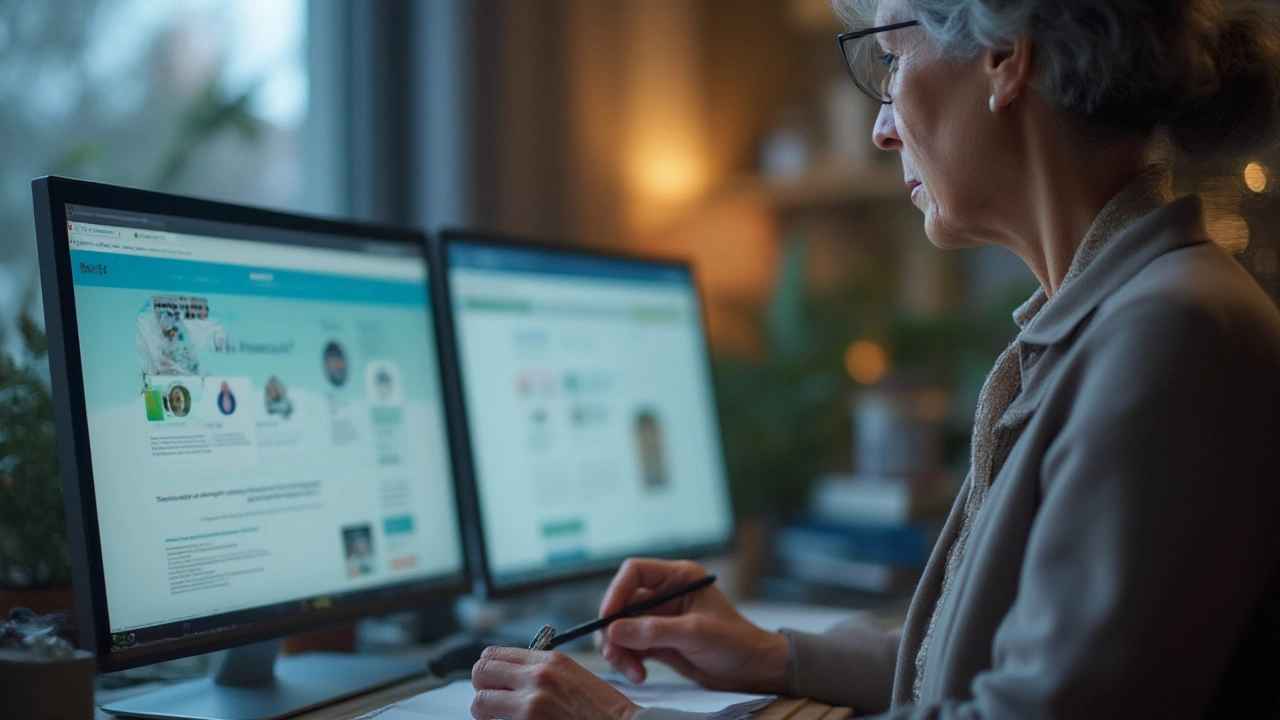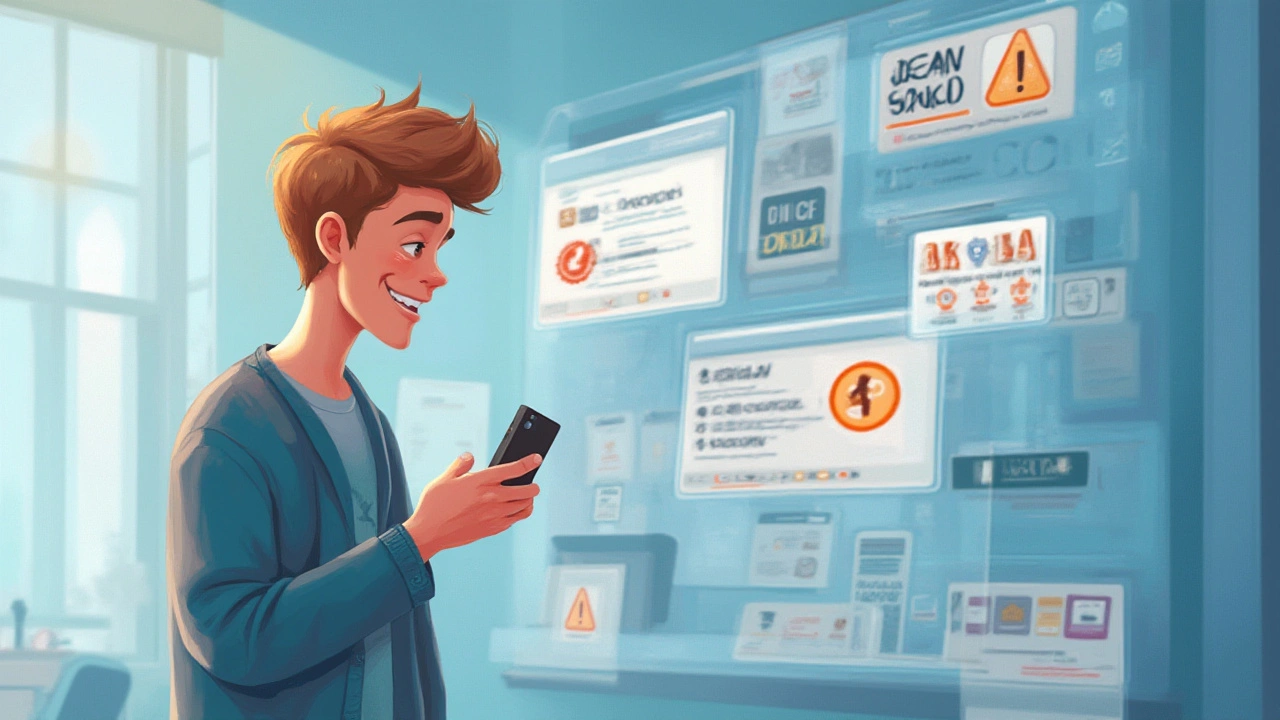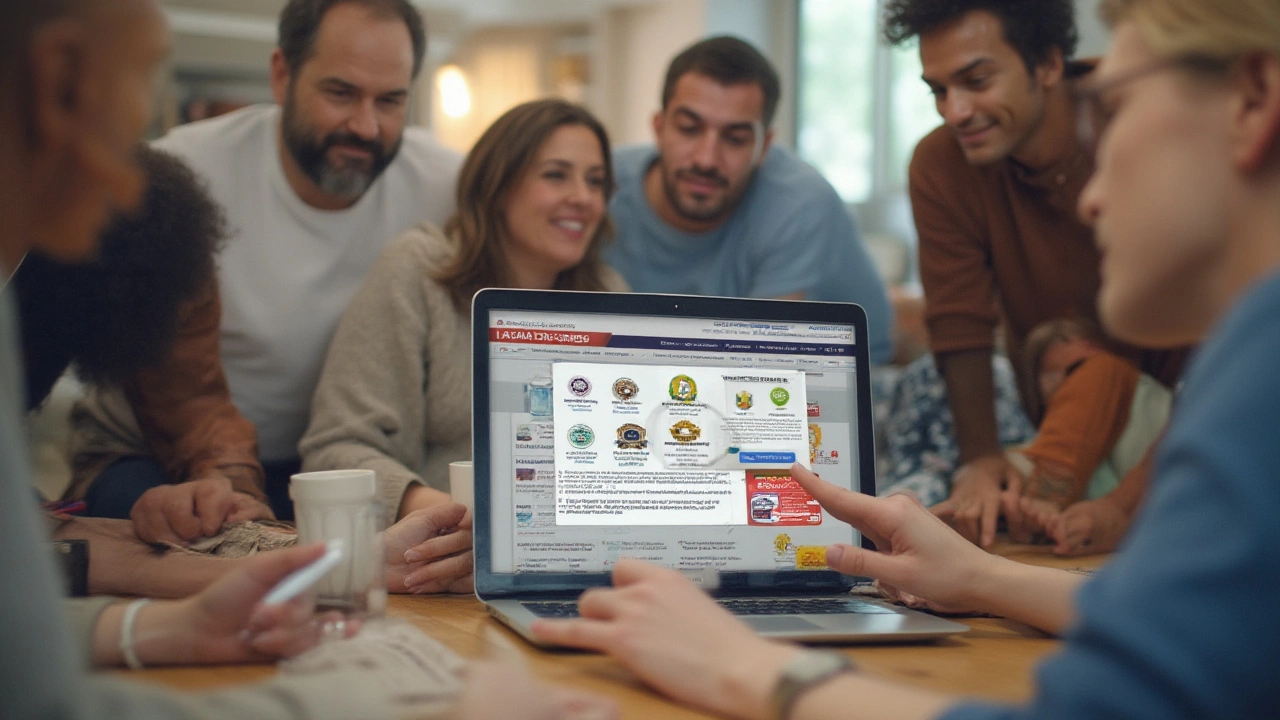Imagine ordering something as important as your medication online and ending up with chalk tablets instead of your much-needed prescription. Sounds crazy, right? But that's exactly the risk you run with shady websites out there selling "Canadian" meds. Canadians actually face a barrage of fake pharmacy sites—and so do international shoppers looking for affordable prescriptions.
Accreditation Seals: The Logos That Actually Matter
Let’s not tiptoe here: not every badge at the bottom of a website means it sells real medicine. Sketchy pharmacies know you might look for professional seals, so they slap on shiny, official-sounding logos hoping you won’t dig deeper. Authentic Canadian pharmacies get their validation from reputable organizations. What are the seals and who issues them?
The gold standards are CIPA (Canadian International Pharmacy Association), PharmacyChecker, and the Canadian Pharmacy Accreditation program by the National Association of Pharmacy Regulatory Authorities (NAPRA). You want to see these on the homepage—and more importantly, you should be able to click the seal and end up on the issuing organization’s website, confirming the pharmacy is actually listed.
Too often, scam sites use low-res images or seals that don’t link anywhere. Here’s the truth: if you can’t verify the membership by following a clickable link, that seal could be as real as Monopoly money.
- CIPA only lists verified, licensed pharmacies—typically based in Canada or partnered with safe international suppliers.
- PharmacyChecker does its own vetting and maintains an online database of safe pharmacies. Their seal should send you to a unique PharmacyChecker page for that drugstore.
- Legit pharmacies display an NAPRA logo, but it’s rare to see it outside physical local Canadian shops.
Here's a quick cheat sheet you can reference for checking accreditation:
| Accreditation/Seal | Where to Check It | Red Flag |
|---|---|---|
| CIPA | Homepage, clickable to CIPA’s member directory | Doesn’t link to real site, not on CIPA.org |
| PharmacyChecker | Homepage, links to PharmacyChecker profile | No listing or mismatched name |
| NAPRA | Rare (usually brick-&-mortar), check NAPRA.ca | Logo but no listing |
One surprising fact: In a sting operation a few years ago, Health Canada reported that almost 50% of online pharmacies targeting the U.S. were unauthorized or outright faking registrations. That's not something you want to gamble with.
While you’re on your seal hunt, pause and ask: does the pharmacy also require a valid prescription for prescription drugs? If not, bounce. Legitimate Canadian pharmacies always want an actual prescription, and you’ll need to send one in or have your doctor call it in. If a site sells you Viagra or antibiotics with nothing but a few clicks, don’t trust your health to it—it’s a classic scam signal.

Domain Checks: Where the URL Tells the Real Story
Take a close look at the web address—don’t just click and hope for the best. Many fake pharmacies use URLs stuffed with words like “cheap prescription Canada,” “no Rx,” or slight misspellings like “CanaddaPharmacie.” Real ones stick with professional, simple names and secure domain endings.
Authentic Canadian pharmacies almost never use suspicious or free domains, nor will you find them on “.ru” or “.su” outside of review sites discussing comparisons. You should see secure HTTPS in the address bar—if it’s just HTTP, skip it. Why risk your credit card details floating around unencrypted?
Want to dig even deeper? Try this:
- Check the age of the domain using a whois lookup (sites like whois.domaintools.com). Reputable pharmacies don’t just pop up last Tuesday. You want a domain with a long track record—at least a year or more.
- Check if the contact info matches up from the site footer and on their whois record. Physical address is a must for Canadian companies, and a real street—not just a PO Box.
- Google the domain with scam-related terms: “CanadaRx.com scam” and see if anything sketchy comes up.
- Look for typos, weird grammar, or awkward-sounding English. Canadian pharmacies serving American and British customers use clean, professional language—because regulators check them. Scam sites rely on low-budget translation or rushed copy.
Here’s another trick I use: search Health Canada’s official database for online pharmacy license holders. Many legit stores put their license number right on their homepage, so you can cross-check it instantly.
If you’re wondering about a particular pharmacy, say, “is Canada Drugs Direct a legit company,” it pays to check detailed reviews from sources that break down domain behavior, company paperwork, and user experiences. You’ll find a well-researched analysis at is Canada Drugs Direct a legit company, which goes deep into what sets reliable Canadian pharmacies apart from fakes.
For international shoppers, beware of copycat sites. Scammers often create nearly identical domains to trusted brands, flip one or two letters, and trick people into entering sensitive data. Slow down, compare URLs, and don’t ever trust a pharmacy found through suspicious pop-up ads or unsolicited emails.

Customer-Service Cues: How Real Canadian Pharmacies Communicate
Skip the cold, silent treatment. Real Canadian pharmacies still act like customer-obsessed local drugstores. If you hit “Contact Us” and get nothing but a generic contact form, or the numbers don’t connect to a live human, that’s not a good sign.
Here’s what separates the good from the fakes:
- Legit pharmacies have an actual phone number, often toll-free, and you can talk to a pharmacist or customer specialist, not just a call center robot.
- Ask detailed questions: about dosage, brands, interactions, shipping, or insurance. The real deal will answer with real answers, not canned replies or silence.
- Check for easy-to-find privacy policies, return/refund policies, and clear terms laid out somewhere you don’t have to click 20 times to find.
- Look for outreach: are there active social media profiles? Legit pharmacies often post updates, answer customer questions, or alert about shipping delays, while scam sites barely have a Facebook page—if that.
- Ask yourself: is the business location listed, and does the phone number have a Canadian area code? Still, be aware—VOIP numbers can be spoofed, so look for consistency across their site and any official records.
- If they dodge or deflect questions about their regulatory status, hang up. An honest Canadian pharmacy is proud to explain their licensure and safety protocols.
A quick read of trusted user reviews (check sites like Trustpilot, Google Reviews, and CIPA’s member comments) will give you a sense of the pharmacy’s real-world behavior. Watch for clusters of negative comments about poor customer service, late deliveries, or—worst of all—fake products. Trustpilot’s spam detection is surprisingly decent; reviews removed for abuse usually suggest a trying-to-hide attitude.
One tip: reputable pharmacies will never ask for only untraceable payment methods. Credit cards and Interac e-Transfer are safe bets; whenever you’re pushed toward Western Union, Bitcoin, gift cards, or weird e-wallets, that’s a bright red flag.
If you’re still not sure, call the customer service line. Even if you don’t have a question, ask for help with sending a prescription or inquiring about generic alternatives. Watch out for hesitation, long waits, or unhelpful attitudes. Good customer care comes standard at licensed pharmacies.
This boils down to simple logic: professional pharmacies serve customers for the long run. Scams disappear as soon as they’ve got your money. Stick with verified sites, check all those seals and details, and use a sharp eye before hitting order—your health and wallet will thank you.


Khamaile Shakeer
July 22, 2025 AT 19:29Suryakant Godale
July 23, 2025 AT 11:00John Kang
July 24, 2025 AT 07:50Bob Stewart
July 25, 2025 AT 10:35Simran Mishra
July 25, 2025 AT 11:48ka modesto
July 25, 2025 AT 21:59Holly Lowe
July 27, 2025 AT 02:08Cindy Burgess
July 27, 2025 AT 14:43Tressie Mitchell
July 28, 2025 AT 18:49dayana rincon
July 29, 2025 AT 01:46Orion Rentals
July 30, 2025 AT 15:35